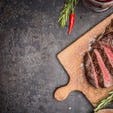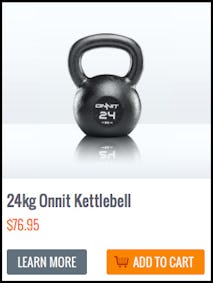 Despite what many think, the biggest mistakes in strength training have nothing to do with failing to buy the latest, greatest equipment or making sure to take the hottest supplements that are out right now. The truth is those kinds of things don’t make much difference at all.
Despite what many think, the biggest mistakes in strength training have nothing to do with failing to buy the latest, greatest equipment or making sure to take the hottest supplements that are out right now. The truth is those kinds of things don’t make much difference at all.
The mistakes you’re making, both in and out of the gym, are what is really holding you back. Today you’re going
to learn how to ensure your chances of success, making your chances much better than “slim and none,” by reducing and eliminating these terrible strength training sins.
Strength Training Sin #1: Poor Goal Setting
Many people have no clear-cut goals whatsoever. They might know that they want to get stronger, put on muscle, or cut up a bit; but they don’t attach any specifics as far as how much stronger, bigger, or leaner they want to get.
If you’re going into the gym with the goal of coming out of there looking like an underwear model, fitness competitor, or professional bodybuilder within a few months, you’re doing yourself a disservice.
Instead, try setting your goals based on a month-to-month plan. If you want to get bigger or trim down, then take some measurements. If you want to increase your lifts, get an idea of what your maxes are; that way, you’ll know where you’re starting. Then, set a goal at the end of the month to show a specific, but realistic change by then.
Strength Training Sin #2: Poor Warm Ups
The warm up is one of the single most effective ways to make sure that you have an awesome workout when you go to the gym. Too many lifters get to the gym and immediately throw plates on the barbell and think that’s going to be an effective warm up.
They’re dead wrong.
A solid warm up should be at a minimum of five minutes long, and you want to work from general (full body) to specific (light sets on your first lift) over the course of that period.
For instance, if you’re hitting the Bench Press in your first lift of the day, you want to begin your warm up with some Bodyweight Squats. Working the big muscles of the legs gets the blood flowing. You also want to hit some static and dynamic core work; Planks or Side Planks are good for this. Some Standing Band Crunches for dynamic ab work and some Hyper Extensions are good to get the back loose.
Next, you want to move up the chain and get the upper back working. Some light Pull Downs will do the trick. Keep the movement controlled in order to make the muscles work and channel the blood flow up into the torso.
You can also add in a light set of Dumbbell Rows and then move into some light sets of Dumbbell Curls and Triceps Push Downs.
By now, you’ve gotten blood flowing throughout the body. The muscles and connective tissues have blood flowing through them now, so they are more elastic and better prepared to do work. Now, it’s time to transition into your specific warm up for the Bench.
I bet you’re gonna feel like a million bucks.
Strength Training Sin #3: Poor Form/Technique
There’s no better way to kill your gains than to get hurt, and that is exactly what can happen if you have poor technique. It pays to make sure you are doing things right in the gym. This can be as easy as going onto YouTube and doing a search for the lifts you want to do and see how others are doing them, as long as you find someone reputable. It’s a far better idea to get a good coach or trainer, but in the meantime here are a few guidelines.
1.) Don’t “Throw” The Weights
For the most part, exercises are supposed to be done in a strict manner. Throwing the weight around with body english is generally cheating or a recipe for injury.
2.) Avoids “Fast” Lifts Until You Get A Coach
Some lifts are done very, very fast on purpose. Examples are the Barbell Clean & Jerk, Push Press, and Kettlebell Snatch. These lifts are done in a fast manner to train for power. There’s a difference between training for power and swinging or throwing the weights though, and the lifts that are done to build power are extremely technical. Instead, build your base of strength with more fundamental, controlled-speed, linear lifts like Presses, Squats, Deadlifts, etc.
3.) Neck In Line With Spine
Some people have a tendency to flex (chin tucked to chest) or extend (head tilted back) the spine excessively when they lift. Keep the neck neutral and in line with the spine for safety reasons.
4.) Shoulders Back/ Proud Chest
When training, think about maintaining a “proud chest posture,” meaning elevating the chest somewhat. This involves pulling the shoulders back and extending the thoracic area of the spine slightly. This is not a true “Military Posture” by any means, and there is not a high level of tension involved. Instead, by pulling the shoulders back and extending the thoracic area, it helps keep you in a safe posture, protecting the lower back.
Strength Training Sin #4: Training Too Long
It is great if you love training, but if you’re spending multiple hours in the gym you might be hurting your results. Most people can get just what they need from their workout by spending 60 to 75 minutes in the gym lifting.
Remember, with every repetition, you are causing micro-trauma to your tissues. The more of this damage you cause, the longer it will take to recover, so keep recovery in mind.
Also, remember that you came to the gym to hit the weights, not chit chat. A talking habit can demolish any hope of good training results. If there’s somebody who is talking your ear off, give him or her the gift of goodbye!
Strength Training Sin #5: Poor Sleeping Habits
You’ve gotta get sleep to see good training results no matter what your primary goal is. Your sleep time is when your body is repairing, getting bigger, and laying the framework for increased strength. This is an important time to make sure you get every day. In my case, I need to get 6 to 7 hours minimum, but I feel even better with 8 if I can get it.
Strength Training Sin #6: Poor Diet
The number one way to absolutely shoot yourself in the foot if your goal is burning body fat is a crappy diet. It’s just a fact that you can’t out work a bad diet. Sure, if you are stuffing yourself with wings, pizza, and chips, you might get stronger, and you might even put some muscle on, but the chances of getting leaner along with it are weak at best.
If you’re going to invest the time in the gym, you should support those efforts by improving your eating. There are varying degrees of “good eating” and, just like training technique, the best way to ensure you do things right in the nutrition realm is to get a coach. Here are some guidelines I follow that have helped me, and I recently lost 50 pounds of fat and have kept it off.
1.) Ditch Bread, Pasta, & Rice
I have found that I instantly feel better without eating these foods, so i rarely do anymore. That is my primary reason for not eating them, but on top of that, they are high carb sources, and in my case, I don’t need that much.
2) Lean Protein At Every Meal
Most mornings, I have five to six eggs, and most lunches and dinners are chicken breast throughout the week. It took me about two weeks to get used to this, rom eating things like grilled cheese sandwiches, hot dogs, and chicken patties all the time. Again, I feel way better and even have less pain since beginning to eat better in March 2013.
3) Quality Snacks
I keep a steady flow of food going into my body because if I don’t eat, I turn into a whiny little punk. My favorite snack as of late is cottage cheese with crushed pineapple. I also might hit a protein shake every so often or a handful of craisins and almonds.
gain, this dietary approach is what has worked for me. I am not a dietitian though, and this might not work for you. The bottom line is this: if your diet is a train wreck, it’s time to tighten things up a bit.
Strength Training Sin #7: Not Drinking Enough Water
Did you know that most people are walking around in a steady state of dehydration?
It’s true, your body needs water to run correctly. Your muscles are made of about 70% water, and just 2% of dehydration begins to hinder your ability to think and perform.
To make sure I get enough water, I fill a gallon jug with water every morning once I get up, and my goal is to drink the entire thing by the time I hit the sack at night. This has been huge for me, as I was getting lots of headaches due to dehydration back in 2009. I starting prioritizing water over things like coffee and diet soda in 2010 and I have never looked back.
If you get a grip on these guidelines, I can guarantee you that your results will improve from the work you do in the gym. You might even find that you feel better, can focus better at work, and experience less pain due
to all of these practices. I know
I have.
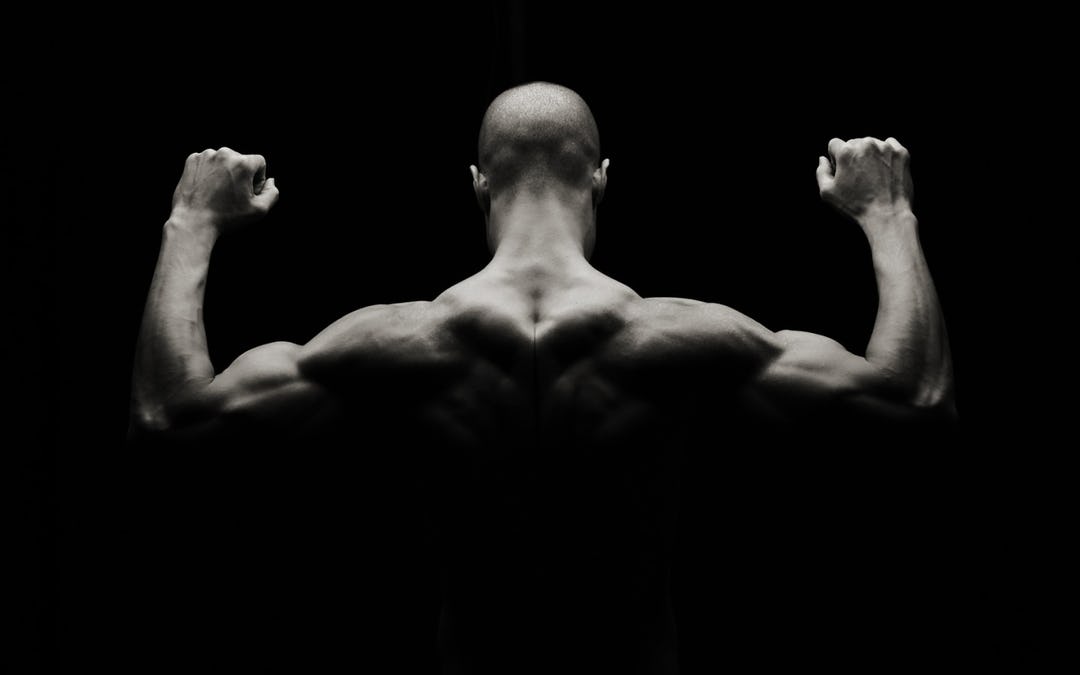
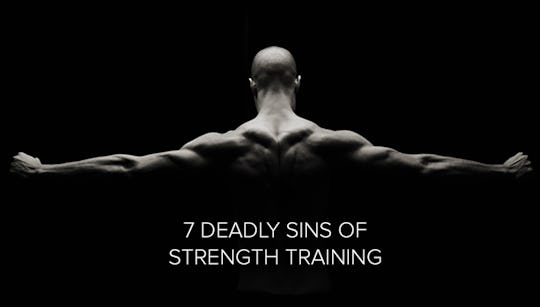
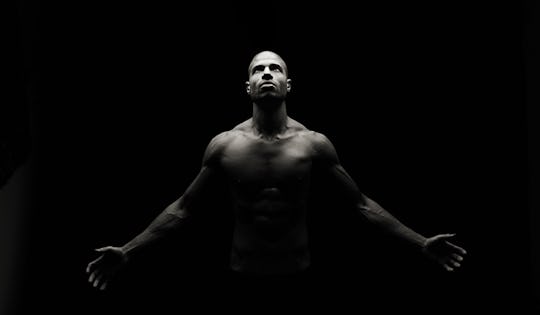
)



